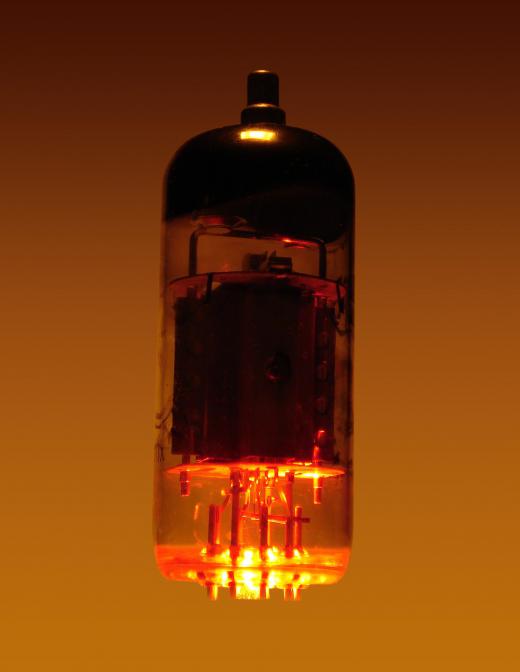What is a Particle Beam?
 Michael Anissimov
Michael Anissimov
A particle beam is a beam of accelerated particles, usually charged particles (ions). Real-life applications of a particle beam include particle accelerators ("atom smashers"), in plasma physics, cathode-ray tube televisions, computer displays, and in cancer therapies. After a brief flurry of research into particle beam weaponry in the 1980s, such investigations were mostly dropped, with lasers and other directed energy weapons getting the attention and research dollars nowadays. A natural example of a particle beam would be lightning, where electrons make a jump from negatively charged clouds to the neutral ground.
Most types of particle beam consist of charged particles such as protons or electrons, because charged particles are easy to accelerate along using magnets. Most particle beams are created by running a stream of particles through a series of devices, each of which imparts a little nudge to the beam, until it is accelerated to a significant speed. In some particle accelerators, this speed can be as much as 99.999% of the speed of light. Particle beams made up of electrons tend to be the fastest, as these particles are more than a thousand times lighter than protons and can thus be accelerated most easily.

Though the term "particle beam" has a sci-fi feel, particle beams are found in all cathode ray tube televisions. Even all electrical cables can be considered to contain a sort of electron particle beam, even though their path is rarely linear. In a cathode ray tube television, a particle beam is produced by an electron gun. The electron gun fires electrons at a fluorescent screen, which lights up in response to the incoming particles, producing a picture.

One innovative use of particle beams is in radiation therapy, where a particle beam is directed to kill cancer cells. The downside of this approach is damage to healthy cells and the risk of excess radiation exposure. The mechanism of action is the radiation damaging the DNA of malignant cells, causing them to become incapable of self-reproducing. One challenge in this type of radiation therapy is the formation of low-oxygen tumors -- tumors that outgrow their blood supply. Tumors with high levels of oxygen are ideal for radiation therapy, as bombarding the oxygenated tissue with radiation releases numerous free radicals which cause secondary damage to cancer cells.
The most powerful particle beams in the world are those used in the largest particle accelerators, such as the Large Hadron Collider (LHC) near Geneva, Switzerland. The Large Hadron Collider lies in a tunnel 27 km (17 mi) in circumference, as much as 175 m (570 ft) underground. At a cost of about $10 billion USD (US Dollars), the LHC is one of the largest and most expensive machines ever built.
AS FEATURED ON:
AS FEATURED ON:












Discuss this Article
Post your comments